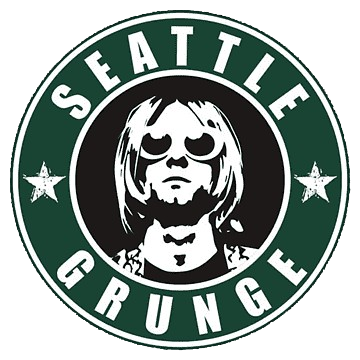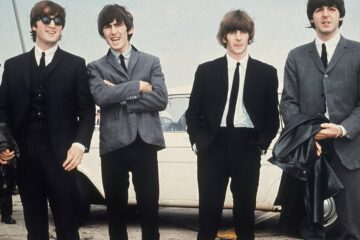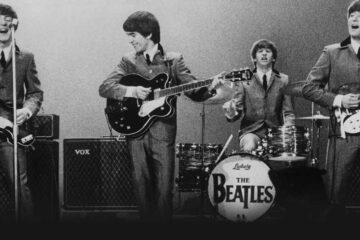Paul McCartney’s mop-top haircut, John Lennon’s vintage glasses, the suit-and-tie look—all the distinctive features of The Beatles are almost inextricable from cultural memory, much like David Bowie’s Ziggy Stardust persona or Elvis Presley’s white jumpsuit. These iconic images have become so historically significant that it’s hard to envision them ever admiring others with the same reverence that many people hold for them.
It’s almost impossible, really, to envision the early days of a band like The Beatles before they even adopted the monolithic name. Would they peer through shop windows of record stores on the local high street, gazing upon a copy of Buddy Holly’s That’ll Be The Day and hoping that one day, maybe, they would gain just a fraction of the success of their cherished favourites?
In truth, the young minds of Paul McCartney, John Lennon, George Harrison, and Ringo Starr were initially captivated by local “stargazers”, as McCartney once explained, which included vocal groups and names like Guy Mitchell and Tommy Steele. “Lonnie Donegan was the big sort of starter over here for a lot of the English people,” McCartney reflected in 1985.
These figures taught McCartney about the power of good vocal arrangements and how various voices could be utilised and melded together like a unity of notes, almost soul-like in execution, while grand and innovative in a broader feel. Much like the later emotional appeal of the Lennon-McCartney partnership, these were the initial building blocks that exposed them to such an endearing and timeless vocal approach.
Cover Story | Katy J Pearson
Paul McCartney – Songwriter – Musician – The Beatles – Wings – 1970s – 2024(Credits: Far Out / Alamy / Paul McCartney)
Music » From The Vault
Paul McCartney reflects on early influences: “That was the first record we ever made with The Beatles”
Kelly Scanlon
Tue 17 September 2024 18:00, UK
Paul McCartney’s mop-top haircut, John Lennon’s vintage glasses, the suit-and-tie look—all the distinctive features of The Beatles are almost inextricable from cultural memory, much like David Bowie’s Ziggy Stardust persona or Elvis Presley’s white jumpsuit. These iconic images have become so historically significant that it’s hard to envision them ever admiring others with the same reverence that many people hold for them.
It’s almost impossible, really, to envision the early days of a band like The Beatles before they even adopted the monolithic name. Would they peer through shop windows of record stores on the local high street, gazing upon a copy of Buddy Holly’s That’ll Be The Day and hoping that one day, maybe, they would gain just a fraction of the success of their cherished favourites?
In truth, the young minds of Paul McCartney, John Lennon, George Harrison, and Ringo Starr were initially captivated by local “stargazers”, as McCartney once explained, which included vocal groups and names like Guy Mitchell and Tommy Steele. “Lonnie Donegan was the big sort of starter over here for a lot of the English people,” McCartney reflected in 1985.
These figures taught McCartney about the power of good vocal arrangements and how various voices could be utilised and melded together like a unity of notes, almost soul-like in execution, while grand and innovative in a broader feel. Much like the later emotional appeal of the Lennon-McCartney partnership, these were the initial building blocks that exposed them to such an endearing and timeless vocal approach.
However, after this came the influx of musicians from all over. Suddenly, McCartney heard the sounds of musicians from America, not just from white backgrounds but from diverse voices that demonstrated the power of cross-cultural unity. Before The Beatles sparked the cultural revolution that would burn brightly out of Britain, they were listening to all of these different musical visionaries, subconsciously allowing it to teach them all about hitting the tinder keg of other corners of the world.
Buddy Holly lit these first defining moments, providing the future members of The Beatles a valuable lesson not just in musical sound but in physical presentation. “That’ll Be The Day, very exciting,” McCartney recalled. “You didn’t know if he was black, white—it didn’t really matter. [There was] just a very electric sound on the radio, and you just got intrigued by this mystic image.”
Though he initially found it challenging to pinpoint what made Holly so captivating, he came to realise that Holly’s appearance played a significant role in inspiring people like himself and particularly Lennon. Before achieving fame, Lennon often struggled with his self-image to the point where he would sometimes perform without his glasses despite not being able to see well. Holly, however, served as a reminder that being yourself was not only acceptable but also cool.
The result of their joint enamourment with Holly resulted in their first record, a cover version of Holly’s ‘That’ll Be The Day’, borne out of their excitement to put their spin on something that deeply resonated with them. “That was the first record we ever made, The Beatles,” McCartney said. “In a little studio in Liverpool. We just went up there one day and made a shellac record.” Spawned from a love for Holly became a guiding principle that enabled The Beatles to explore influences, broaden their universal appeal, and then explode across the globe, leaving charred remains still smouldering six decades on.




